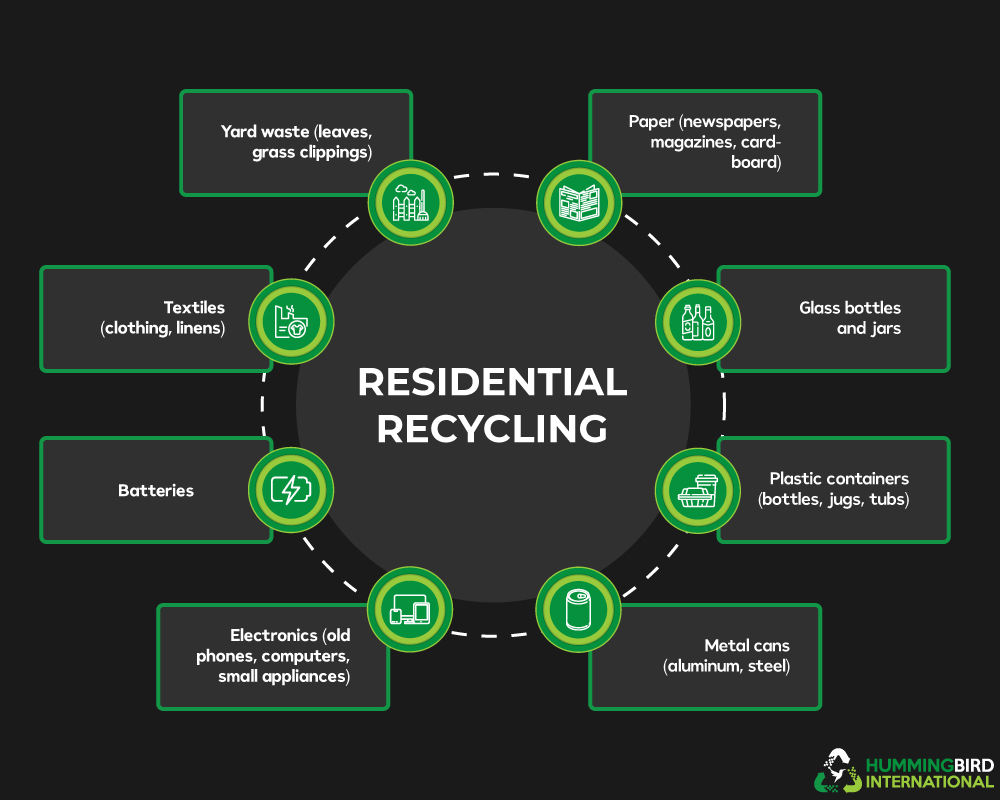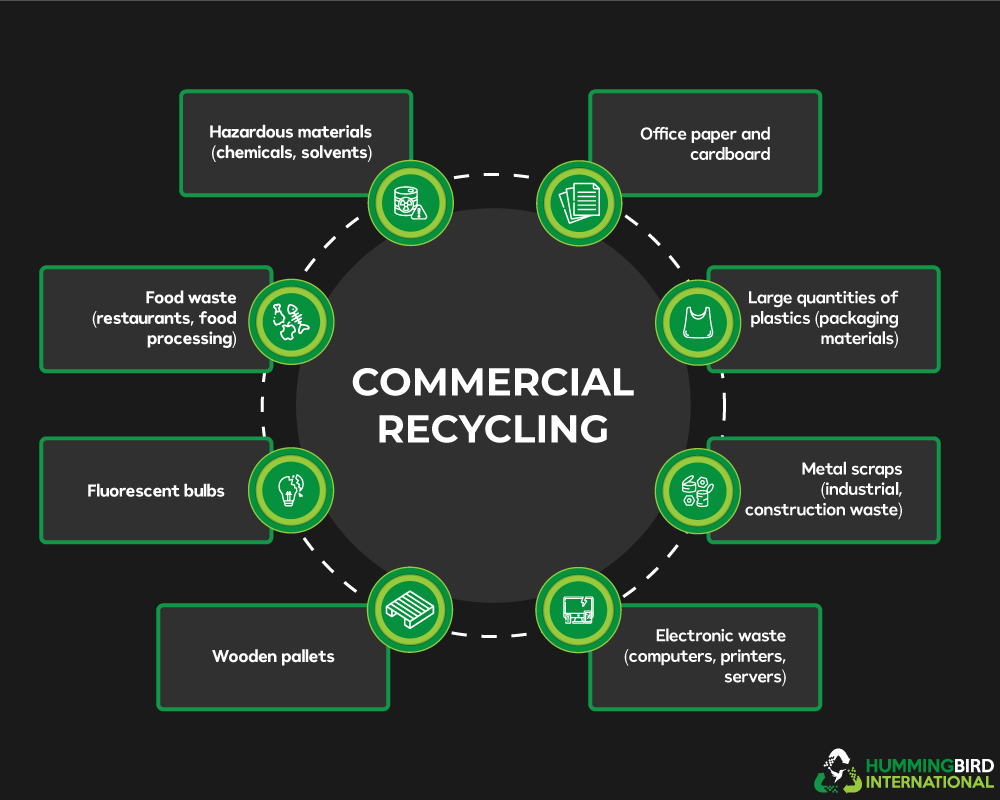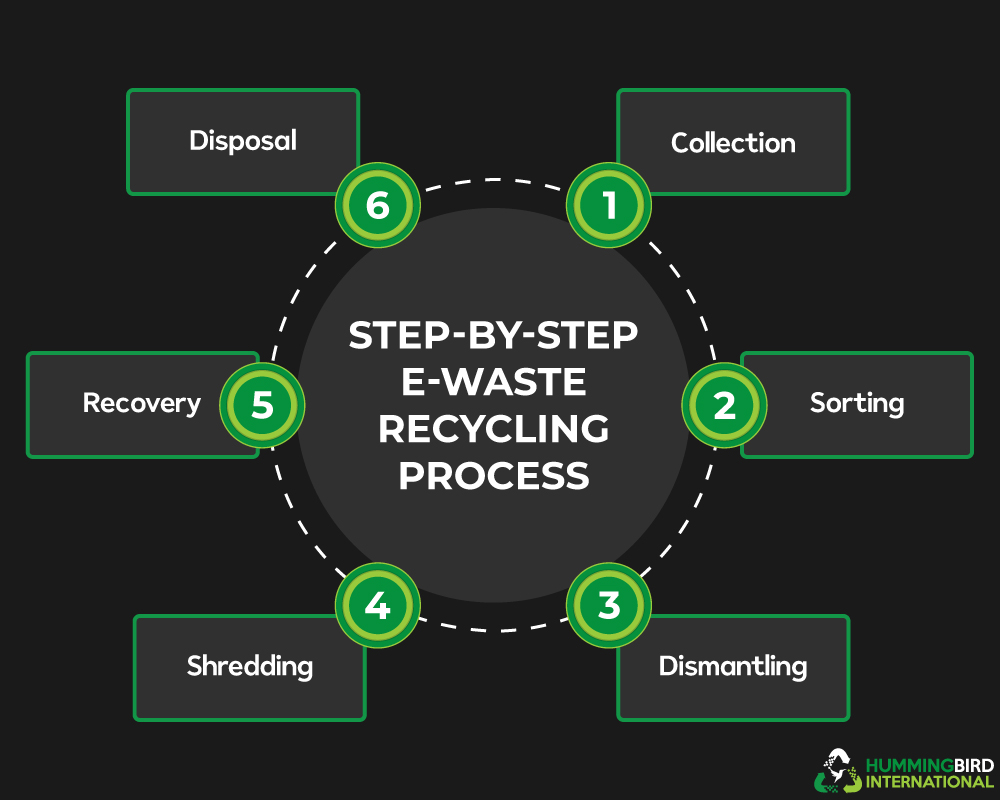Residential E-Waste Recycling vs. Commercial E-Waste Recycling: The Difference

Proper residential and commercial e-waste recycling and disposal is necessary to maintain a neat, clean, and green environment. Whether you are a homeowner or a business owner, you must ensure that all the e-waste production under your authority is properly maintained, cleaned, and disposed of.
E-waste is a growing problem globally, and several tons of e-waste is produced worldwide annually. It is a severe problem and we must all work together to prevent it from destroying our planet. It is our duty as homeowners or business owners to collaborate with a professional e-waste disposal, handling, and recycling service provider.
However, to do that, you must know about commercial and residential e-waste recycling and disposal and how they differ from each other. Today, we are here to talk to you about just that to help you understand and manage your e-waste better. After that, we will list down the complete process of proper e-waste recycling.
Residential Recycling
We produce residential or domestic waste during random activities. These are not transactional. Most of the time, residential e-waste is non-hazardous and can include the following:
- Stationary items
- Glass items
- Paper
- Worn out clothes
- Newspaper
Also, it can be hazardous, like:
- Motor oil.
- Paint
- Polish
- Acid
- Cleaners
Commercial Recycling
Commercial waste is the one that companies, businesses, and industries produce. It includes everything present in residential waste as well as the materials, items, and devices that are not included in the residential e-waste section.
It can include everything from paper, batteries, PC components, and electronic parts to chemicals, poisons, explosive materials, etc.
Difference Between Residential and Commercial E-waste Recycling
Proper waste management and disposal are essential to ensure a clean, safe, and sustainable environment. Whether you are living in a house or running a factory, it is mandatory to properly handle your e-waste and ensure its proper disposal. Embracing eco-conscious living plays a crucial role in reducing environmental impact and preserving natural resources for future generations.
However, residential and commercial e-waste are different in several ways. These are as follows:
| Point of Evaluation | Residential Ewaste Recycling | Commercial Ewaste Recycling |
| Amount of waste | Residential e-waste is much less in quantity and comes from small-scale activities.
It can be garbage, occasional hazardous material, recyclables, and yard waste. |
Commercial e-waste is in a much more significant quantity and can vary daily.
It can be hazardous and non-hazardous. It can include chemicals, paper, PC parts, etc. |
| Regulatory Compliance | Residential e-waste management is handled by the local municipality and is done through its regulations.
It includes collection programs that ensure and encourage recycling and proper e-waste disposal. |
Commercial companies, businesses, and industries must adhere to strict IT asset disposal regulations from the government. They often require special permits and even contracts from e-waste disposal services. |
| Frequency of collection | Residential e-waste collection is mostly daily from garbage and other collectors.
The frequency depends on the whole locality, but it is mostly to maintain cleanliness. |
Commercial e-waste collection can be more frequent and flexible. It is often in varying quantities, which may require too often or normal routine pickup services.
Companies can schedule it daily, weekly, or monthly based on their needs. |
| Waste Segregation | Residential e-waste segregation is straightforward with separate containers for garbage, recyclables, and other waste.
Community committees need to spread awareness about proper electronic and another waste disposal. |
Commercial e-waste segregation can be complex, especially in locations that deal with both hazardous and non-hazardous materials, devices, and items.
Every company must maintain strict recycling SOPs and laws to ensure all employees are discarding waste properly. |
| Need of dumpster | For homeowners and commercial property holders, it is essential to call a dumpster service when renovating a home, destroying or remodeling property, changing furniture, spring cleaning, hosting special events, and construction. | |
Step-by-Step E-waste Recycling Process
Both commercial and residential e-waste recycling processes involve numerous steps. They help ensure efficient and effective electronic devices and waste disposal.
These are as follows:
1. Collection
The first step is the collection of electronic devices and waste collection at a designated location. It is done in different ways including self-drop-off at a collection point, recycling events, and pick-up services.
2. Sorting
After the waste is collected in one place, the disposal team sorts the waste according to devices and materials. It is necessary as some items are toxic, harmful, explosive, etc which can cause harm if mishandled.
3. Dismantling
In this stage, the electronic waste is dismantled into several separate components. It includes separating batteries, cables, circuit boards, and other different components. Some items are easily separable manually while some require automatic machines.
4. Shredding
After dismantling and separation, the e-waste items are shredded into tiny pieces. It helps effectively separate materials and extract useful or valuable components.
5. Recovery
Once everything is in smaller pieces after passing through a shredder, the recovery step starts. In this step, the personnel extract precious metals or materials such as gold and palladium. These items are useful in manufacturing electronic devices.
6. Disposal
Once all the valuables are extracted, the non-recyclable items go through the safe disposal process. Most IT asset disposal services use environmentally friendly processes and ensure proper disposal by the book.
Conclusion
Learning and understanding commercial and residential E-waste recycling is important to developing proper disposal strategies.
Mostly, residential e-waste consists of predictable items and general household waste, while commercial e-waste can vary in both type and quantity. So, whether you are a homeowner or a property manager, you must monitor and handle the e-waste.
Responsible residential and commercial e-waste recycling and management is beneficial for everyone. It safeguards our environment and promotes sustainability for years to come.
So, every homeowner and business owner needs to collaborate with a reliable and efficient e-waste recycling and disposal services provider. It will help you ensure your e-waste is not harming the Earth and also help recycle valuable material for further use.
About The Author Kelly Sampson
Kelly Sampson is a writer, blogger, and environmental enthusiast. She has strong opinions about climate change, the dogs vs. cats debate, and Oxford commas. She has lent Hummingbird International her engaging and spirited voice and turned our blog into a great place to find valuable information about e-waste, e-waste recycling, and the ITAD industry. Explore our blog to read more of her work.









